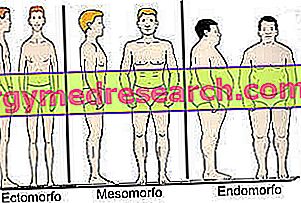By Dr. Roberto Uliano
Polycystic ovary (PCO) is a very heterogeneous condition characterized by ovarian dysfunction and menstrual disorders often associated with clinical and biochemical signs of hyperandrogenism, hirsutism and ultrasound presence of ovarian cysts. Often the clinical picture of this syndrome is very blurred and confused. The most frequent endocrinological disorders include:
1) menstrual irregularities (80%) (oligomenorrhea, amenorrhea, metrorrhagia, infertility);
2) hyperandrogenism (60%) (hirsutism, acne, alopecia);
3) obesity (50%).
The presence of polycystic ovaries is among the most common causes of infertility among women and spontaneous abortions in the first trimester of pregnancy.

FEEDING AND SYNDROME OF THE POLYCISTIC OVARIAN
One of the strategies to resolve insulin resistance is to follow a low glycemic index diet. The glycemic index of a food represents the rate at which blood glucose increases (that is, the concentration of glucose in the blood) following the intake of that food. The index is expressed in percentage terms with respect to the rate at which blood glucose increases with the intake of a reference food (which has a glycemic index of 100): a glycemic index of 50 means that the food raises the blood sugar with a speed that is equal to half of that of the reference food. After the intake of carbohydrates with a high glycemic index, the blood sugar undergoes a sharp rise, a great deal of insulin is secreted with consequent hyperstimulation of the tissues.
The low glycemic index foods are fruits and vegetables, dairy products (yougurt, whole milk, etc.), whole grains (especially oats and barley), pasta cooked al dente, while those with a high glycemic index (above 60-70) are all those easily assimilable: sugar, refined cereals (rice, chips, wafers, biscuits), cakes and pies, sugary, carbonated drinks, foods that contain sugar, dextrose, glucose syrup in the ingredients . Other foods to watch out for their medium-high glycemic index are: white bread, biscuits, potatoes, croissants, raisins, some types of fruit and vegetables (carrots, melon, pumpkin) .
The useful considerations that can be made about the glycemic index are the following:
- the glycemic index decreases if the food or the meal is rich in fiber, so that an integral cereal or pasta with vegetables has a lower index than a refined cereal or a pasta with sauce.
- The glycemic index decreases if fat is added to a food. This phenomenon is due to the fact that the digestion of the food to which fats have been added is slower, and therefore the carbohydrates it contains circulate more slowly. In fact the whole milk has a glycemic index much lower than the skimmed one. This is also true for all light foods such as yogurt; the whole one has a lower glycemic index than the light one.
- The total release of insulin also depends on the amount of carbohydrates ingested and not just on the glycemic index. So a meal should not exceed a quantity of carbohydrates greater than 55% of daily calories and should also contain fats and proteins (complete meal).
- Along with adequate nutrition it is also necessary to carry out a moderate daily physical activity that helps the tissues and in particular the muscle to better use sugars and to have an efficient response to insulin.



